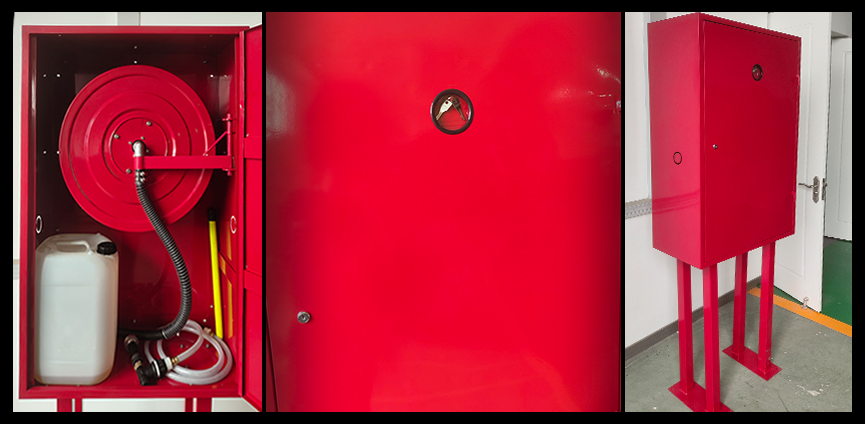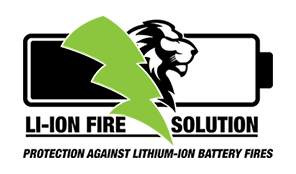
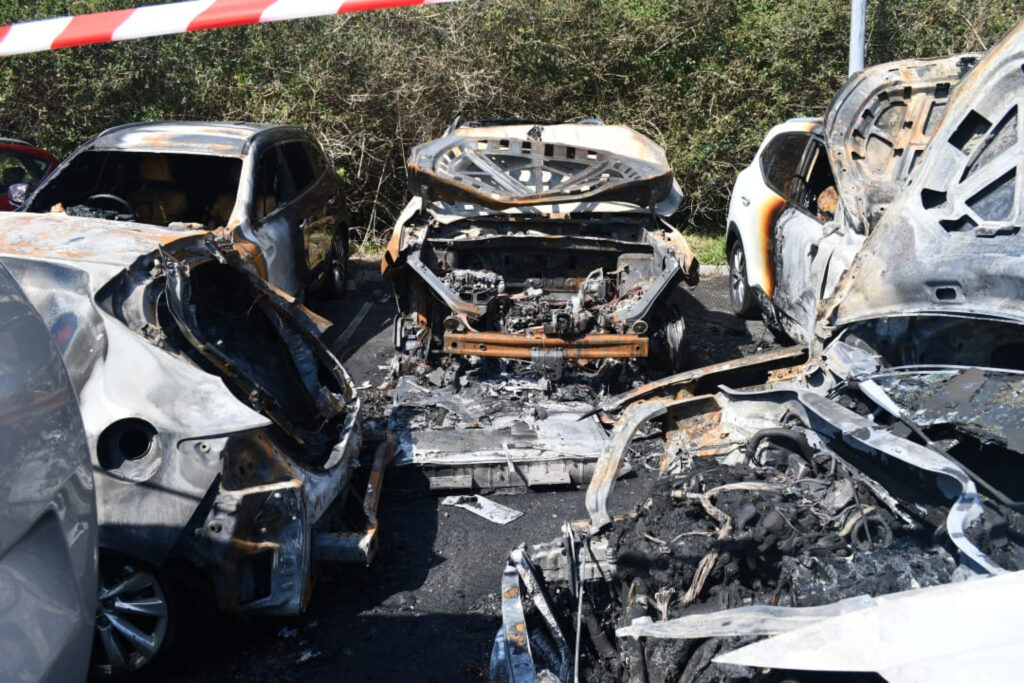
Electric vehicle ownership in Australia is on the rise, with there now estimated to be more than 180,000 vehicles on the road. This is thought to make up approximately 1% of the total number of light vehicles on Australian roads, with this number only set to increase over coming years.
Lithium-ion batteries are used in most of the electric vehicles found on Australian roads. These batteries are known for being compact, lightweight, efficient, and powerful. However, they are also highly flammable, and can catch fire or explode if they overheat or become damaged. The risk of electric vehicles catching fire is thought to be highest if they overheat, are charged using non-compliant charging equipment, have a system or battery malfunction, or are crushed, punctured, or damaged.
Electric vehicles are very safe, and are thought to be around 100 times less likely to catch fire than traditional petrol or diesel powered vehicles. Despite this, some level of risk still remains.
The risk of lithium-ion battery fires in electric vehicles can be largely mitigated by using compliant charging equipment, ensuring your vehicle is properly maintained and serviced, and ensuring it is protected from overheating or becoming damaged. Despite taking every precaution though, it is still not possible to eliminate the risk of a lithium-ion battery fire entirely. Therefore, it is important that electric vehicle owners and dealers who trade in electric vehicles are prepared to react quickly in the unlikely event that there is a lithium-ion battery fire.
Thorough planning and careful consideration are essential following a road incident or collision involving an electric vehicle. First responders, such as paramedics and fire departments, must swiftly evaluate the situation to identify any potential fire risks, which may not be immediately apparent. Towing and insurance companies also need to exercise caution when handling and storing electric vehicles after a collision, as fires can ignite weeks later due to unforeseen short circuits or structural damage.

What we offer
We offer a range of solutions to assist electric vehicle owners to mitigate and respond to lithium-ion battery fires. Some of the solutions we offer include electric vehicle fire blankets, such as the EV60X80 and EV30X40, which are designed to isolate and extinguish both internal combustion engine and electric vehicle fires.
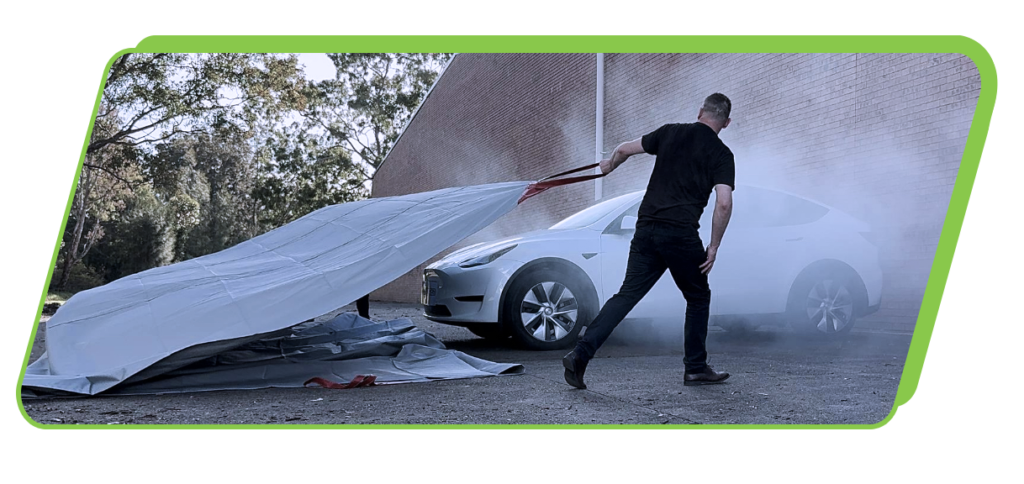
We also offer EVFS under vehicle misting systems. These systems use water mist spray, which is the most effective method for cooling electric vehicle batteries and preventing the spread of fire and toxic gases. Our under vehicle misting systems feature a low-profile design that is compatible with all major EV brands, covering the entire chassis of the vehicle. They can be quickly assembled and deployed onsite, and work seamlessly with existing hydrants, pump systems, or fire trucks onsite. All our under vehicle misting systems feature a primary water mist nozzle to target the battery packs beneath electric vehicles, providing optimal cooling, halting thermal runaway, and extinguishing fires; two curtain nozzles to protect firefighters, by setting the main spray in place and preventing the fire from spreading to other vehicles; and extension poles that enable firefighters to operate from a safe distance.
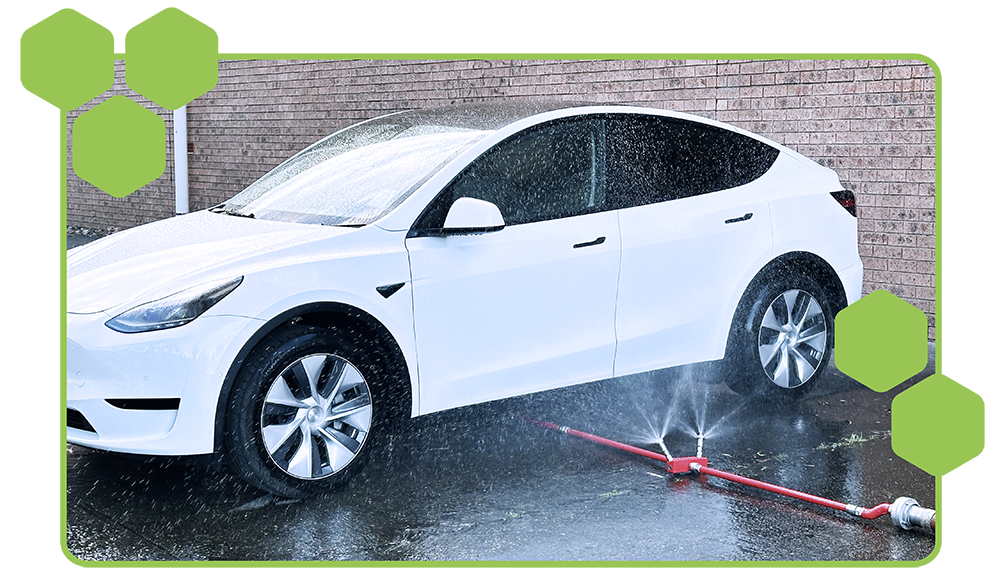
We also offer hose induction systems. Our lay flat induction systems can be used to upgrade your existing hydrant system, taking them from being limited to Class A fires to allowing them to efficiently handle multiple fire classes, including Class A, B, D, F, and lithium-ion battery fires. This setup can be installed as a permanent fixed system near a hydrant valve or used as a mobile kit that can be carried to any landing valve.
